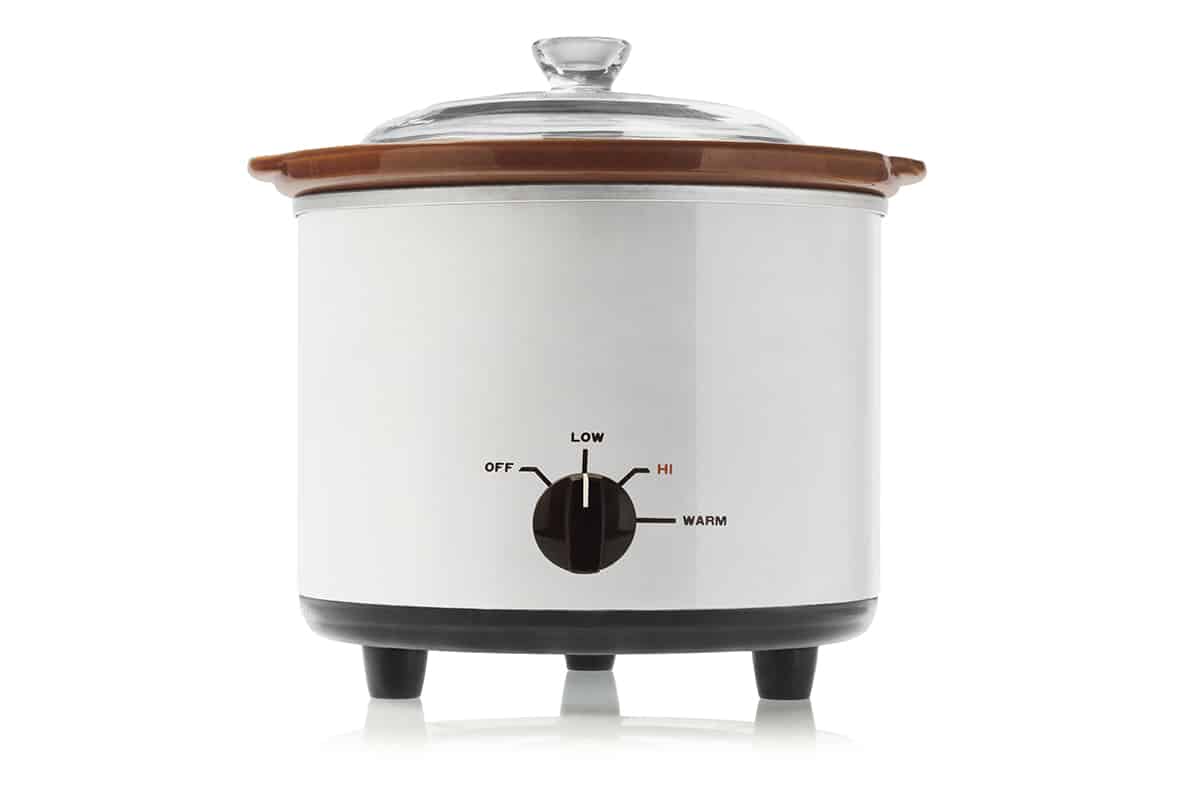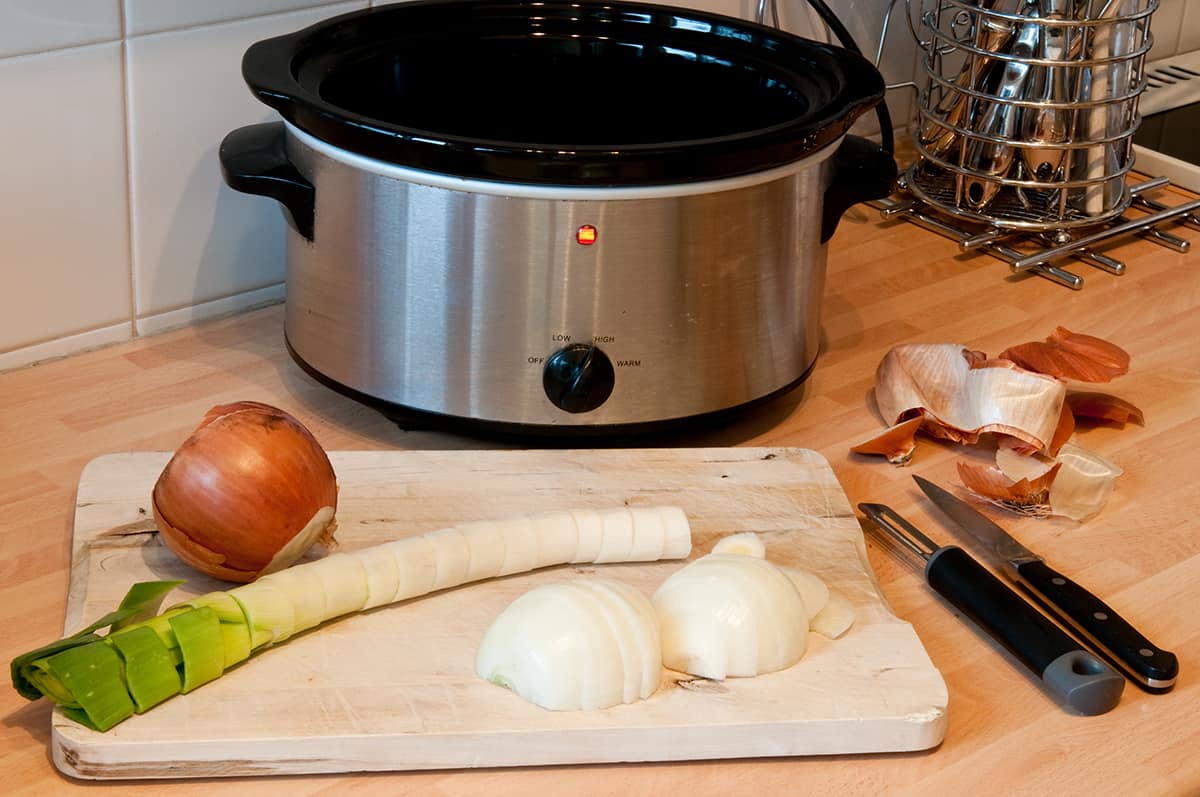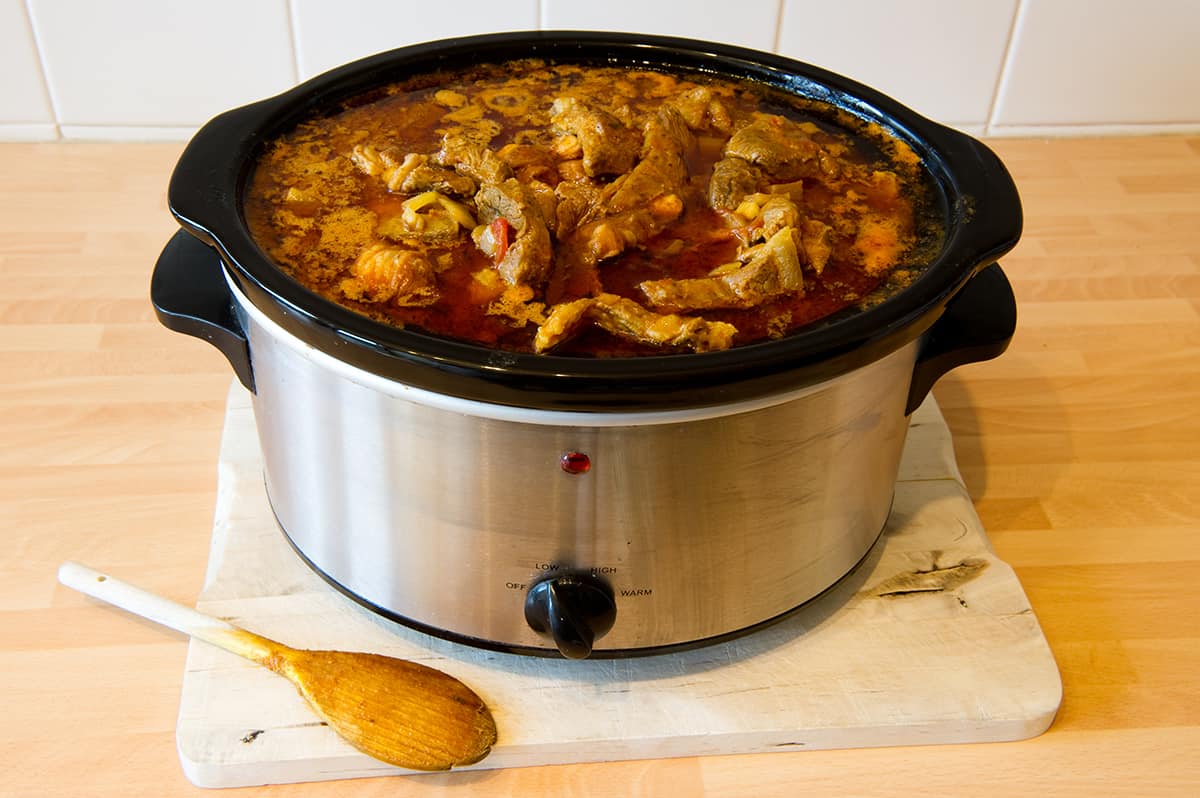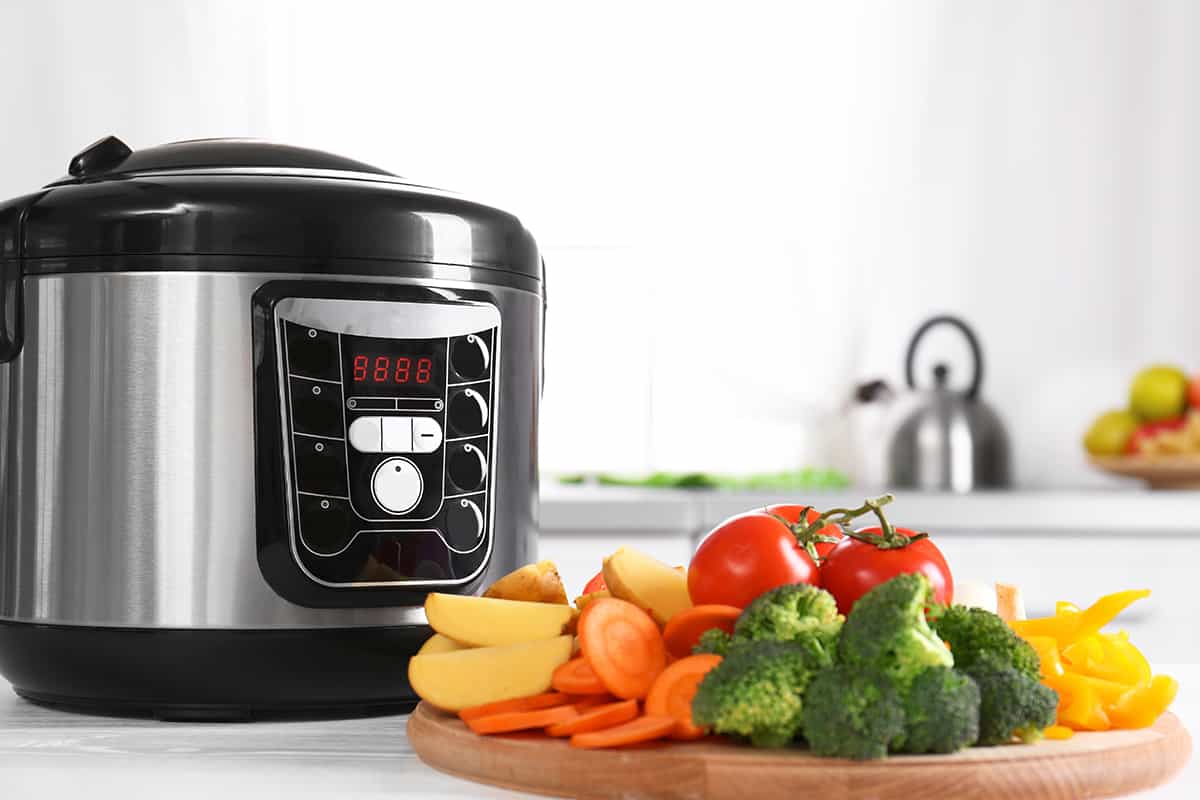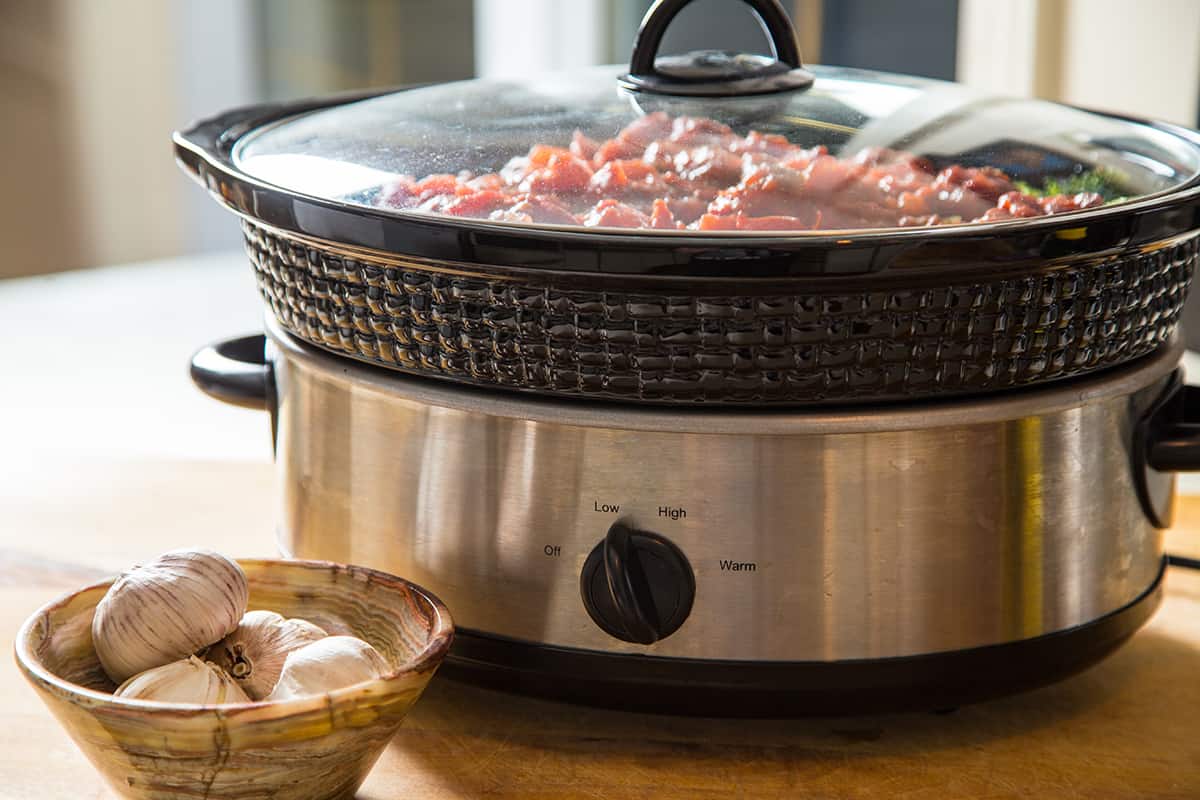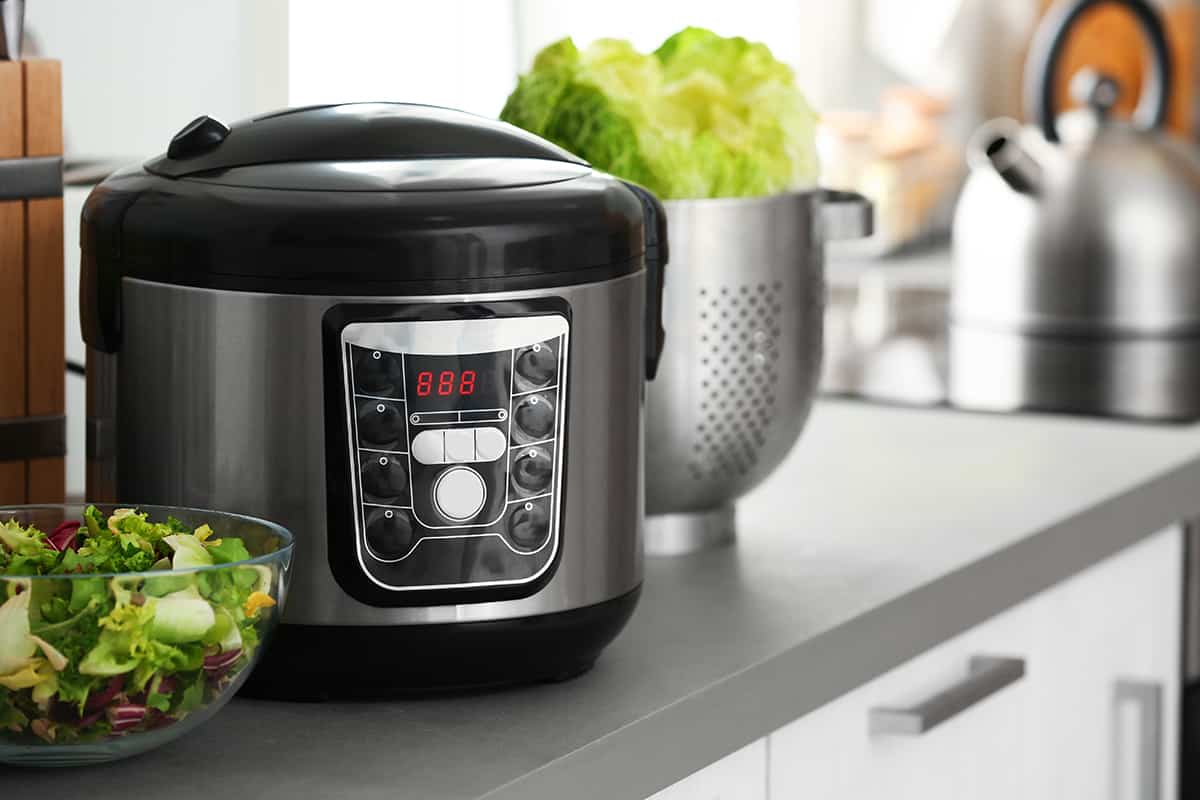Using a slow cooker is so simple that even beginners can achieve amazing results right from the very first use.
There are only three settings on a slow cooker, and these are ‘warm’, ‘low’, and ‘high’. Understanding the differences between these settings will ensure you are well on your way to being a slow cooker expert. While most meals are best cooked on the low setting, there are some scenarios where the high setting can be a better option.
Here we explore the key differences between the high and low settings on a slow cooker and explain which circumstances and types of food call for which setting.
What’s the Difference Between Low and High on a Slow Cooker?
On most slow cookers there are only three different setting options. These are ‘warm’, ‘low’, and ‘high’.
The ‘warm’ setting is intended only to keep food warm once it has been fully cooked, however, the ‘low’ and ‘high’ settings can both be used for slow cooking. If you’re new to using a slow cooker you might expect that the ‘low’ setting cooks at a low temperature, and the ‘high’ setting cooks at a higher temperature.
This is a perfectly reasonable assumption to make, but in the case of most slow cookers, it’s actually incorrect. The difference between the low and high settings on a slow cooker has nothing to do with the maximum temperature they reach, instead, it concerns the amount of time the cooker takes to reach the desired temperature. A slow cooker will typically reach a temperature of around 200°F, and the low and high settings are an indication of how long it will take to bring the food up to that temperature.
On the low setting, most slow cookers will reach their top temperatures after 6 to 8 hours, while on the high setting, the same temperatures can be achieved in around 3 to 4 hours. The length of time it takes a slow cooker to get to temperature is not about convenience, it’s about the way the food gets cooked.
When using the ‘low’ setting, food cooks much more slowly and gradually, which achieves more tender results. On the ‘high’ setting, the food won’t get quite as soft or tender, making it better suited for lean cuts of meat.
Does Low Slow Cooker Setting Cook at Lower Temp?
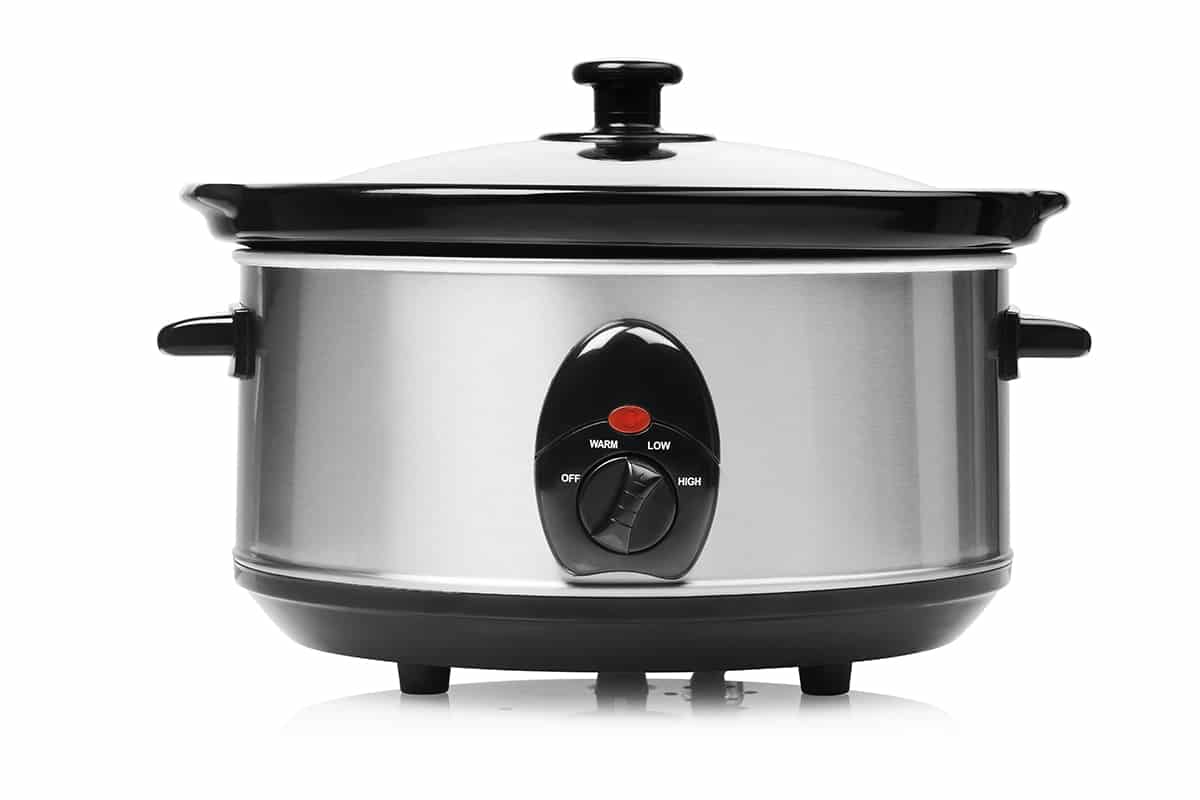
It’s a common misconception that the low setting on a slow cooker cooks at a lower temperature than the high setting. On most slow cooker models, this isn’t the case.
Cooking on the low setting will mean that your appliance reaches a simmering point over a longer stretch of time compared with the high setting, but the actual temperature it reaches will be the same.
However, the ‘warm’ setting will maintain a lower temperature than both the low and high settings. This setting is intended to be used once the food is fully cooked, and it will keep your meal at a warm temperature that’s just right for serving up. Never use the warm setting to cook your meals, as this won’t get food hot enough to be safe to consume.
How to Convert Low and High Settings for Recipes
If your slow cooker recipe calls for a certain amount of hours spent on a particular setting, there are ways you can convert this to suit your schedule better. You can alter a recipe cooked on ‘high’ to being cooked on ‘low’ if you plan to be out of the house for the day and don’t want your food to get overcooked.
Or you could switch a ‘low’ setting recipe to the ‘high’ setting if you don’t have as much time to get the meal cooked as you were expecting. The way to convert between high and low is to account for 2 hours on low for every 1 hour on high. This means if your recipe calls for 4 hours on the high setting, it will need 8 hours if you instead cook it on the low setting.
If a recipe needs 10 hours on a low setting, you can save time by switching it to 5 hours on a high setting. Be warned that the different settings will give you different results, so if you cook a recipe which is intended to be cooked on the low setting at a high setting, then you may find your meal isn’t as tender as it should be.
Which Setting is Best on a Slow Cooker?

The best setting to use on a slow cooker entirely depends on what you’re cooking and what your aims are. If you want to cook a hassle-free meal and have it ready in around 4 hours to suit your family schedule, then cooking on the ‘high’ setting will be the best option for you.
However, if your preferred aim is to achieve a meal which includes tender and succulent meat, then the low setting will be better for this. The type of food you cook is also going to make a difference to your outcomes cooked in different settings.
Cheaper cuts of meat which are typically more tough will be best cooked on the low setting because this will do a better job of tenderizing the meat. If your meat is lean, then the high setting will cook it just fine and save you time in the process.
Pros and Cons of ‘High’
Pros
Faster cooking
The main advantage of using the high setting on a slow cooker is that the meal will be ready more quickly. This is useful if you forget to prepare the meal in the morning and have to throw it together when you get home from work, and still want the food to be ready in time for your evening meal.
Cons
Fewer tender results
If you’re cooking tough meats then using the high setting is not going to improve the texture. In fact, cooking cheap cuts of meat on the high setting can cause them to become even more tough and chewy.
Pros and Cons of ‘Low’
Pros
Better results
Cooking food in the slow cooker on the low setting almost always results in the most flavorsome and best-textured meals. Many professional cooks advise only ever using the low setting on a slow cooker because it does a much better job of tenderizing meats and locking in flavors.
Cons
Takes longer
Cooking on the slow cooker’s low setting takes double the amount of time as the high setting, which means you need to be quite organized when it comes to preparing the meal and turning the slow cooker on. If you’re cooking an evening meal on a low setting then this will usually mean adding your ingredients to the slow cooker pot at around breakfast time.
This doesn’t work for everyone, especially if you’re somebody who is always rushing around to get ready in time for work in the morning. However, in some instances, the fact that the low setting takes longer to cook can work as an advantage. For example, if you are out at work all day then the low setting means your food will be perfectly cooked by the time you get home, whereas the high setting would result in overcooked food if left for too long.
